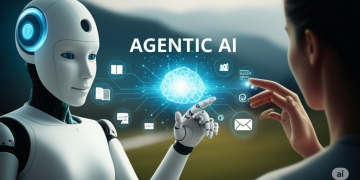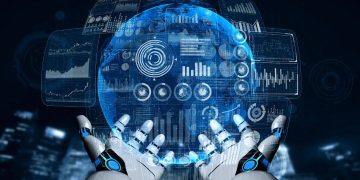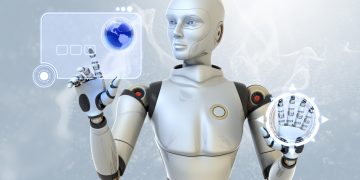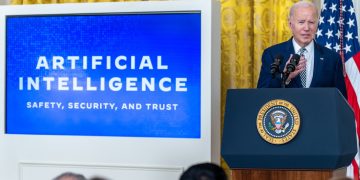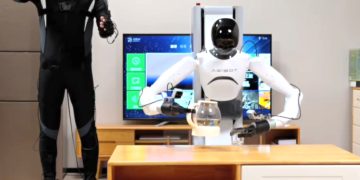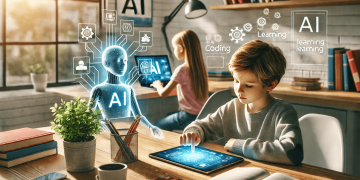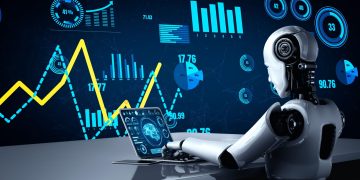Introduction to Quantum Computing and Its Intersection with AI
Quantum computing represents a paradigm shift in computational power, leveraging the principles of quantum mechanics to solve problems that are intractable for classical computers. Unlike classical bits, which can be either 0 or 1, quantum bits (qubits) can exist in a superposition of states, enabling them to perform multiple calculations simultaneously. This property, along with entanglement and quantum interference, allows quantum computers to process vast amounts of data at unprecedented speeds. As quantum computing continues to advance, its intersection with artificial intelligence (AI) has given rise to a new field known as quantum machine learning (QML). QML explores how quantum algorithms can enhance traditional machine learning tasks, offering the potential to revolutionize AI by solving complex problems more efficiently and accurately.
The synergy between quantum computing and AI lies in their complementary strengths. Machine learning, particularly deep learning, thrives on large datasets and complex models, but it often faces challenges related to computational limitations and scalability. Quantum computing, with its ability to handle exponential data spaces and perform parallel computations, can address these challenges by accelerating training processes and enabling the exploration of more sophisticated models. This convergence has the potential to unlock breakthroughs in areas like optimization, cryptography, and pattern recognition, paving the way for a new era of AI innovation.
How Quantum Machine Learning Algorithms Differ from Classical Ones
Quantum machine learning algorithms differ fundamentally from their classical counterparts due to their reliance on quantum principles. One of the most significant differences is the use of quantum parallelism, which allows QML algorithms to explore multiple solutions simultaneously. For example, the quantum version of the support vector machine (QSVM) leverages quantum linear algebra to classify data points in high-dimensional spaces more efficiently than classical SVMs. Similarly, quantum neural networks (QNNs) use qubits and quantum gates to perform computations, enabling them to process information in ways that classical neural networks cannot.
Another key distinction is the use of quantum feature spaces. Classical machine learning algorithms often struggle with high-dimensional data, as the computational cost increases exponentially with dimensionality. Quantum algorithms, however, can map data into high-dimensional quantum feature spaces using quantum kernels, making it easier to identify patterns and relationships. This capability is particularly useful for tasks like clustering and classification, where traditional methods may fall short.
Quantum algorithms also excel in optimization problems, which are central to many machine learning tasks. The quantum approximate optimization algorithm (QAOA) and the variational quantum eigensolver (VQE) are two examples of quantum algorithms designed to find optimal solutions more efficiently than classical methods. These algorithms leverage quantum superposition and entanglement to explore a broader solution space, potentially reducing the time required to train complex models.
Despite these advantages, QML algorithms are not a one-size-fits-all solution. They are particularly well-suited for specific types of problems, such as those involving large datasets, high-dimensional spaces, or complex optimization tasks. For simpler problems, classical algorithms may still be more practical due to their maturity and ease of implementation.
Potential Breakthroughs in Optimization and Cryptography
One of the most promising applications of quantum machine learning is in the field of optimization. Many real-world problems, such as supply chain management, financial portfolio optimization, and drug discovery, involve finding the best solution from a vast number of possibilities. Classical optimization algorithms often struggle with these problems due to their computational complexity. Quantum algorithms, on the other hand, can explore multiple solutions simultaneously, making them ideally suited for tackling large-scale optimization challenges.
For instance, the quantum approximate optimization algorithm (QAOA) has shown promise in solving combinatorial optimization problems, such as the traveling salesman problem and graph partitioning. By leveraging quantum parallelism, QAOA can identify near-optimal solutions more efficiently than classical methods. Similarly, the variational quantum eigensolver (VQE) is being used to optimize molecular structures in drug discovery, potentially accelerating the development of new treatments.
Cryptography is another area where quantum machine learning is expected to make a significant impact. Quantum computers have the potential to break many of the cryptographic systems currently in use, such as RSA and ECC, by exploiting algorithms like Shor’s algorithm. However, QML can also contribute to the development of quantum-resistant cryptographic systems. For example, quantum machine learning algorithms can be used to analyze and improve the security of post-quantum cryptography protocols, ensuring that they remain robust against quantum attacks.
Moreover, QML can enhance cryptographic techniques like homomorphic encryption, which allows computations to be performed on encrypted data without decrypting it. By combining quantum computing with machine learning, researchers can develop more efficient and secure encryption methods, enabling new applications in privacy-preserving data analysis and secure multi-party computation.

Current Limitations and the Road Ahead for Quantum AI
While the potential of quantum machine learning is immense, several challenges must be addressed before it can achieve widespread adoption. One of the primary limitations is the current state of quantum hardware. Quantum computers are still in their infancy, with most existing systems having a limited number of qubits and high error rates. These hardware constraints make it difficult to implement and scale QML algorithms for real-world applications. Researchers are actively working on improving qubit stability, error correction, and scalability, but significant advancements are needed to make quantum computing practical for machine learning tasks.
Another challenge is the complexity of developing and implementing QML algorithms. Quantum programming requires a deep understanding of both quantum mechanics and machine learning, making it inaccessible to many researchers and developers. To address this, efforts are underway to create user-friendly quantum programming frameworks and libraries, such as IBM’s Qiskit and Google’s Cirq, which simplify the process of designing and testing quantum algorithms.
The integration of quantum and classical computing is also a critical area of research. Hybrid quantum-classical algorithms, which combine the strengths of both paradigms, are seen as a promising approach for overcoming the limitations of current quantum hardware. For example, variational algorithms like VQE and QAOA use classical optimization techniques to fine-tune quantum computations, making them more practical for near-term quantum devices.
Ethical and societal considerations must also be taken into account as quantum AI advances. The potential for quantum computers to break existing cryptographic systems raises concerns about data security and privacy. At the same time, the transformative power of quantum machine learning could exacerbate existing inequalities if access to quantum technologies is limited to a few organizations or countries. Ensuring that the benefits of quantum AI are distributed equitably will require international collaboration and the development of inclusive policies.
Looking ahead, the road to quantum AI is filled with both challenges and opportunities. As quantum hardware continues to improve and new algorithms are developed, the potential applications of QML will expand, driving innovation across industries. Collaboration between researchers, industry leaders, and policymakers will be essential to navigate the complexities of this emerging field and unlock its full potential.







